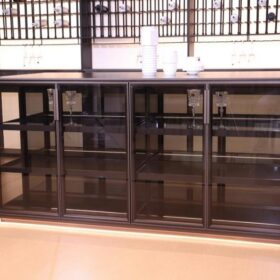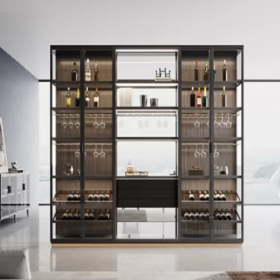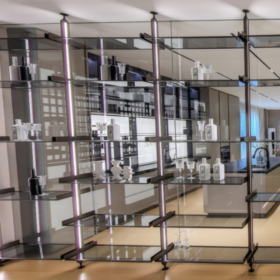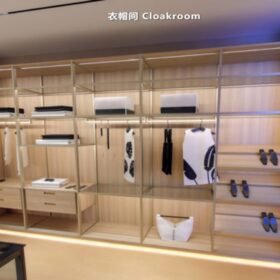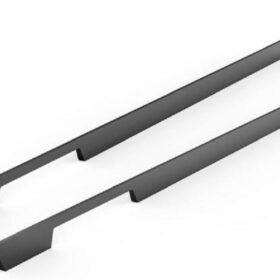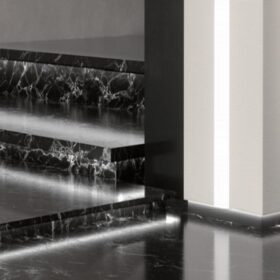Troubleshooting Common Issues with Aluminum Cabinet Handles
Aluminum cabinet handles are a popular choice for kitchen and bathroom cabinets due to their durability, sleek appearance, and resistance to corrosion. However, like any other hardware, aluminum cabinet handles can occasionally encounter issues that affect their functionality or aesthetics. In this article, we will delve into several common issues associated with aluminum cabinet handles and provide practical troubleshooting tips to resolve them effectively.
Loose or Wobbly Handles
Loose or wobbly cabinet handles can be a nuisance and compromise the integrity of your cabinets. This issue typically arises due to wear and tear, improper installation, or damaged screws.
Check Screw Tightness
The most common cause of loose handles is loose screws. Use a screwdriver to tighten the mounting screws that secure the handle to the cabinet door. Ensure that the screws are appropriately tightened but avoid overtightening, which can damage the screws or the cabinet door.
Assess Screw Holes
Inspect the screw holes in the cabinet door. If the holes are stripped or damaged, the screws will not hold securely. Fix the problem by filling the holes with wood filler or toothpicks and redrilling them with a smaller drill bit.
Replace Worn Screws
If the screws are damaged or stripped, replace them with new ones of the same size and type. Choose high-quality screws designed for cabinet hardware to ensure durability and prevent future issues.
Scratched or Corroded Handles
Aluminum cabinet handles are generally scratch-resistant and corrosion-resistant, but they can still become damaged over time if not properly maintained.
Remove Scratches
Minor scratches on aluminum handles can be removed using a soft cloth and a gentle polishing agent, such as a metal polish or baking soda. Apply the polish with circular motions and rinse thoroughly with water.
Clean Corroded Handles
Corrosion is more likely to occur in moist or humid environments. Clean corroded handles with a solution of vinegar and water. Apply the solution to the handles using a damp cloth and allow it to sit for a few minutes before rinsing thoroughly.
Apply Protective Coating
To prevent further corrosion, apply a protective coating over the handles. You can use furniture wax, car wax, or a clear coat spray specifically designed for metal.
Discolored Handles
Aluminum cabinet handles can sometimes become discolored over time, particularly if exposed to harsh chemicals or cleaning agents.
Identify Discoloration Cause
Determine the cause of the discoloration. Common causes include exposure to bleach, harsh detergents, or acidic substances.
Clean and Remove Stains
Use a non-abrasive cleaner and a soft cloth to clean the handles and remove any stains or residues. If the discoloration persists, try using a commercial cleaner specifically designed for aluminum.
Apply Metal Polish
Once the handles are clean and dry, apply a metal polish to restore their shine and protect them from further discoloration.
Faulty Handles
In rare cases, aluminum cabinet handles may become faulty due to manufacturing defects or improper use.
Replace Faulty Handles
If the handle is genuinely faulty, you should replace it with a new one. Contact the manufacturer or retailer for assistance if the handle is still under warranty.
Lubricate Moving Parts
If the handle has moving parts, such as a pull-out handle, lubricate them with a dry lubricant, such as graphite powder or a silicone-based spray lubricant. This will reduce friction and ensure smooth operation.
Realign Handle
If the handle is misaligned, loosen the mounting screws slightly and adjust the handle to the correct position. Retighten the screws firmly once the handle is aligned.
-
2024-11-29Top Trends in Modern Kitchen Cabinet Pulls for 2024
-
2024-11-28The Ultimate Guide to Modern Kitchen Cabinet Pulls- Materials, Styles, and Tips
-
2024-11-27Elevate Your Kitchen Design with These Must-Have Modern Cabinet Pulls
-
2024-11-26Sleek and Stylish- The Best Modern Kitchen Cabinet Pulls for a Contemporary Look


